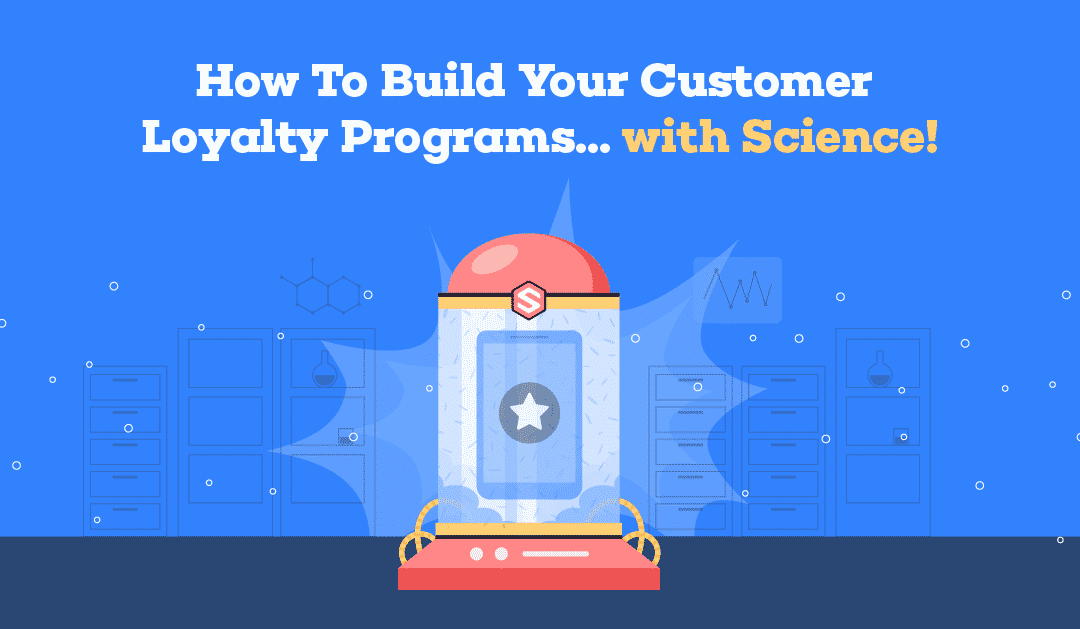
Mar 24, 2021 | Best Practices, Blog
How To Build Your Customer Loyalty Programs… with Science!
An eCommerce Science Lesson
Welcome to your eCommerce Science lesson on Customer Loyalty. Simply put, customer loyalty is that conditioned behavior of “human want thing, company has thing”.
- I want shoes, Nike has shoes.
- I want coffee, Starbucks has coffee.
- I want the meats, Arby’s has the meats.
You get the picture. In fact, a 2021 Customer Experience Trends Report just proved that we’re creatures of habit, with 3 in 4 shoppers making purchasing decisions based on their past experience. So how do you get your company into that equation? With a generous and truly engaging customer loyalty program, of course!
What is a Customer Loyalty Program? It’s a customer-facing program that aims to increase customer retention and motivate repeat purchases… which is a high-falootin’, fancy business school way of saying:
Going the extra mile to really engage with your customers will keep them coming back for more than just your products (like when the waitress calls you “sweetie”.)
In this article, we’ll describe the benefits and best practices for each type of customer loyalty program so that you can start building a customer loyalty program of your very own.
Benefits of Customer Loyalty Program
Customer loyalty programs have been proven to inspire customer retention, drive customer referrals, and save your sales team some budget.
Inspire customer retention. While it’s always nice to see a familiar face, members of customer loyalty programs typically spend nearly 20% more than typical customers. Not to mention, existing customers are 50% more likely to buy a new product of yours.
Drive customer referrals. With loyalty programs that create community or competition, beyond traditional word-of-mouth, people will organically share your loyalty program efforts, contribute positive reviews, and even generate content of their own by way of UGC or ambassadorships.
Save costs: Companies must spend 500% more to convert a new customer compared to an existing one. For example, if you spend $100 flagging down an Average Jane from the street, giving her the business, and closing the sale; you’ll only need to spend $20 to close the sale with them next time.
Building a Customer Loyalty Program
There are six distinct types of customer loyalty programs used by major brands today.
- Points
- Paid Membership
- Tier Rewards
- Progress and Competition
- Community
- Subscription
Let’s dive into a description and best practices for each type. Keep in mind, every type can be used in combination with the other to create hybrid loyalty programs.
Points Program
The points program allows customers to accrue points through various actions, and spend those points on rewards. It is a brilliant way to gamify the shopping experience, and is used by retailers with high volumes and inexpensive items, such as grocery stores, fashion outlets, or fast food chains (hi McDonald’s Monopoly).
You can start by creating a simple points systems, which has two components:
- What actions will customers complete to accrue points? Many retailers equate a $1 spent to 1 point, and increase points if it is a product you need to push.
- How will customers use their points? You can offer discounts, free gifts, samples, and just about anything.
Offer relevant and personal rewards. Beyond product discounts, rewards should be something that truly resonates with your target audience, such as free tickets to a relevant event or cool swag.
Consider using points program software like Smile.io, which allows you to build customized point systems for your online and physical stores.
Paid Membership
The paid membership program invites customers to pay a “joining fee” for members-only club access and VIP benefits, where the perceived benefits of joining the program far outweigh the cost.
You can start by offering exclusive benefits, discounts and product releases to your paid members, and unless you’re already a recognizable brand with strong social proof, this program is best-suited when targeting existing customers.
Be sure to incorporate your business values into the program to build stronger relationships. If your business revolves around certain cause, like Toms for example, you could engage your membership base to feel closer to the contribution
Once your paid membership program is operational, ask your members for feedback and reviews, and widely advertise those perks to convert your non-members into paid members.
Tier Rewards
The tier rewards program offers another way to gamify engagement, and incentivizes customers to ascend tiers that reward with increasingly desirable perks e.g., Silver, Gold, Platinum, Uranium Status on airlines. This provides a satisfying experience, and even a little bragging rights, for your regular customers.
To get started, decide how many tiers you’ll offer based on your available perks. Keep the levels to a minimum or else customers will tire out climbing the seemingly never-ending tiers. Not to mention, customers at your top tier will have the greatest levels of customer retention, so don’t make it too challenging to get there. Aim for a solid distribution of customers at each tier.
Next, you’ll want to decide all the different conditions that a customer can climb tiers, whether it’s dollar amount spent, frequency/volume of orders, or some other form of engagement.
From there, map out available perks based on their value and assign them to each tier. You want to keep it simple and easily understood. Be sure to offer truly valuable and exclusive benefits for the higher tiers.
Progress and Competition
The Progress and Competition loyalty programs publicly issue engagement-related goals or competition, with rewards granted to the top performers. Common examples include Pelaton’s leaderboard, Trivia HQ, Nike Run Club’s public progress tracker, and more
When you publicly set a goal or issue a competition, there will be people that strive to win… it’s just human nature. What’s more, customers who believe they are close to achieving a goal or performing well in a competition become more committed to their efforts — this is known as the endowed progress effect.
To get started, create fun and attainable goals or a challenging game that peaks people’s interest and beckons to their competitive instincts. The goals or game need not focus entirely on buying a product or even engaging in your company at all; rather, the best way to capitalize on this loyalty program is to position your product as the competitive edge you need to reach these goals and win the game.
Be sure to visually encourage progress and comparison with progress bars, leaderboard, and various nudge tactics.
Community
The Community program strives to create a platform where your members can interact with other like-minded individuals to connect and share content, get access to exclusive benefits and events, and stay-in-the-know about your company (causing excruciating FOMO for those not-in-the-know).
To get started, find your target audience by leveraging existing social media platforms to develop a sense of community. Play around with concepts that create bonds not only between your company and customers, but among customers themselves.
Many companies have branded their base by calling them a cute pet-name (hi Barbs), or rallying behind a common cause. In fact, about 66% of customers are more willing to trust brands that take stances on social and political issues that resonate with them.
As long as you encourage discussion that is relevant to your brand, there is no wrong way to create a community-focused loyalty program.
Subscription
The Subscription loyalty program, commonly known as “Subscribe & Save”, allows customers to subscribe to weekly, monthly or seasonal purchases and receive discounts upwards of 15% off. Notable examples are GNC, Trunk Club, Butcher Box, and any brand that ships offers recurring purchases or subscription boxes. (We cover the subscription model extensively in our blog.)
To get started, develop a pricing and bundle strategy that incentivizes customers to sign-up for repeat purchases. Examples include freemium options, early bird offers, free trials, bundles and more. From there, provide an easy way for customers to manage and even customize their subscriptions.
Subscription models have shown to yield better customer relationships, improved aggregate data, and more diversity in product offerings. Not to mention, it gives brands the creative freedom to understand how their customers would prefer to engage with their products and services.
Wrap It Up
By using one or all of the customer loyalty programs above, your company will offer exciting and fun ways to engage with your company, and incentivize repeat customers in the meantime.
While just about any eCommerce company can promise a lucrative subscription model or rewards program, the reality is that these are extremely complicated strategies to pull off without the right inventory management and order fulfillment processes to back them up.
In fact, most 3PLs and fulfillment providers simply don’t offer the customization options that eCommerce companies need to pull off loyalty programs. That’s why you need to make sure you are giving your loyalty to the right fulfillment provider.
That’s why more and more eCommerce companies rely on ShipHero’s advanced bundling and customization capabilities to power their loyalty programs with reliable 2-day shipping across the contiguous U.S.
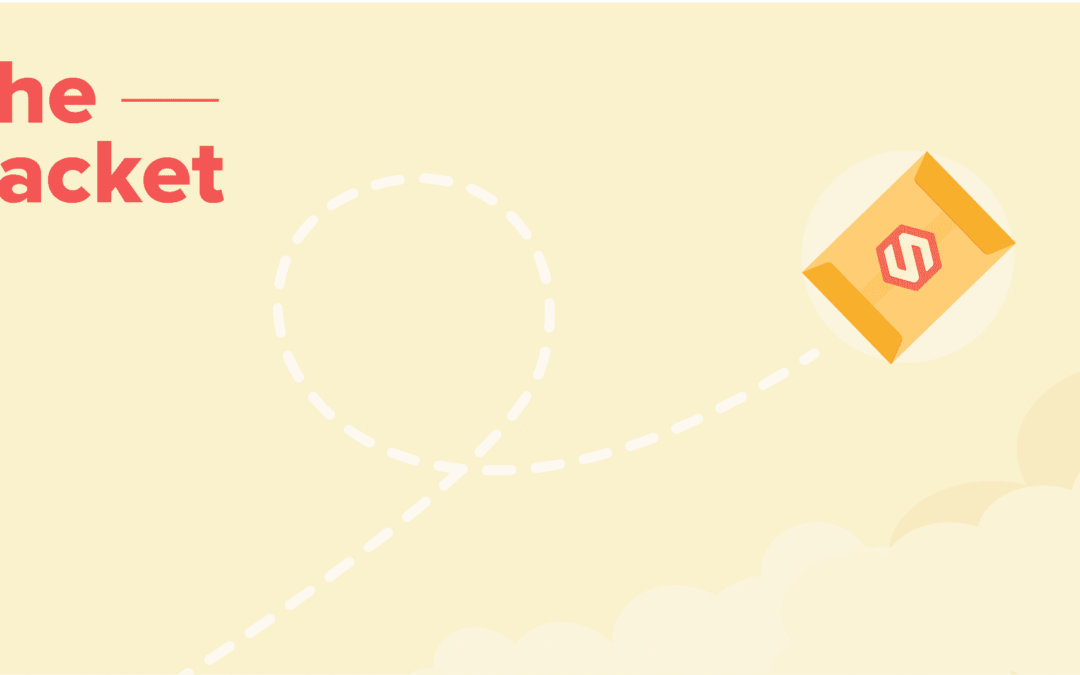
Mar 19, 2021 | Blog, The Packet
Front and Center
Hey theEre Packeteers,
Happy FRiday from your hmble Packet writer! Did yuu take it easy this Saint Pattyricks’s day like I did?! Yuu celebrating Saint Josepph’s tooday? NO I didn’t spend all my stimmy on whisky.. Hey I’m fine to write this, seriously I’mFINE. Gimme the laptop. I can tYpe.
…
Seeing Green
Even if you didn’t wear green, Americans were certainly seeing green this St. Patrick’s day when the second round of pandemic stimulus checks bagen to hit their bank accounts. The most recent $1,400 direct payment will help a lot of individuals pay for very basic necessities like rent, food and utilities. (Track your stimmy here.)
Economists believe that the stimulus checks could provide a much needed boost to the hard-hit retailer sector. Did that peak your interest? Well, it certainly didn’t for…
The FED
On Wednesday, the U.S. Federal Reserve announced that there will be no interest hikes until 2023, keeping prime interest rates near 0%. What does this mean? Borrowing money from banks will continue to be extremely cheap, which makes it easier for people to get the capital they need to start a business or make a major purchase. In the same announcement, the Fed increased their U.S. GDP estimate and lowered the unemployment estimate… so things are looking up for the economy?
Yup.
Not to mention, vaccine production is ramping up, about 8% of the population has been vaccinated thus far, and the first American baby has been born with antibodies against COVID-19 after the mother received the Moderna vaccine whilst pregnant. Adorable and ground-breaking.
Thank you.
After 14 beautiful weeks at the helm of the Packet, I wanted to take a moment to thank all of the Packeteer subscribers that have joined us every Friday. I hope you enjoy reading it as I enjoy writing it, and if you ever have interesting topics to cover or want to connect, email us here.
…
SEe I TOLD you I could do it…
Back of the Packet
Lab-made Human Embryos
Bold title to lead in with, explain. This week, research papers have revealed for the first time that scientists have created living organisms that resemble human embryos. Using stem cells or reprogrammed skin cells, scientists were able to create clumps of cells that look just like pre-embryos.
Daylight Savings Time
It happened, in case you didn’t know why you’ve been late to everything this week. Thanks farmers.
ShipHero News
Futuristic Logistics & Emerging Tech
We can rebuild it, we have the technology. We can make it better than it was. Better, stronger, faster… The next generation of supply chain is almost here, and it’s digital.
Supply Chain 4.0 incorporates emerging technology — blockchain, AI, autonomous trucks, drones, 3D printing, augmented reality, and more — into every aspect of the supply chain, rendering it nearly unrecognizable from today’s capabilities.
What does the future of logistics hold? Check out our newest blog Futuristic Logistics & Emerging Tech to find out.
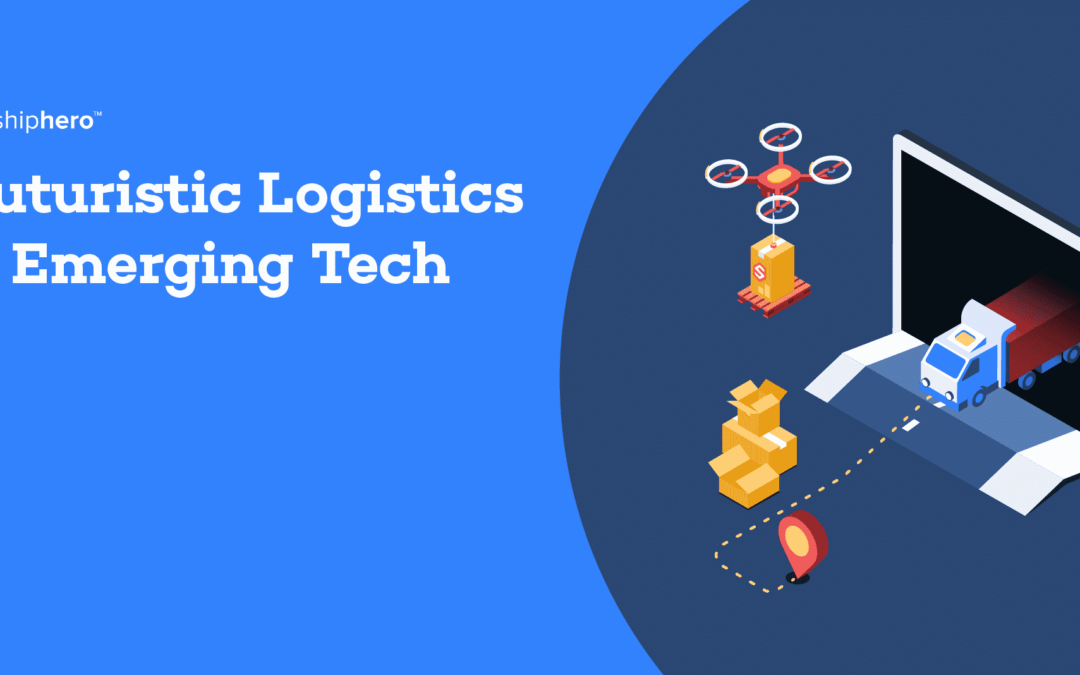
Mar 16, 2021 | Best Practices, Blog, Warehouse Management Software
We can rebuild it, we have the technology. We can make it better than it was. Better, stronger, faster… The next generation of supply chain is almost here, and it’s digital.
Supply Chain 4.0 incorporates emerging technology — blockchain, AI, autonomous trucks, drones, 3D printing, augmented reality, and more — into every aspect of the supply chain, rendering it nearly unrecognizable from today’s capabilities.
More and more logistics start-ups are gaining ground in the warehousing and fulfillment industry through agile pricing and advancements in one or more emerging technology, like predictive inventory management and automated workflows powered by machine-learning algorithms.
Take ShipHero for example. Advancements in machine-learning powered supply chain forecasting and platform-based integration capabilities have allowed us to intelligently distribute inventory to lower shipping costs and delivery times. That’s why ShipHero has rapidly scaled to ship over $5 billion orders to date.
So, what else does the future of logistics hold? Let’s dive in to find out.
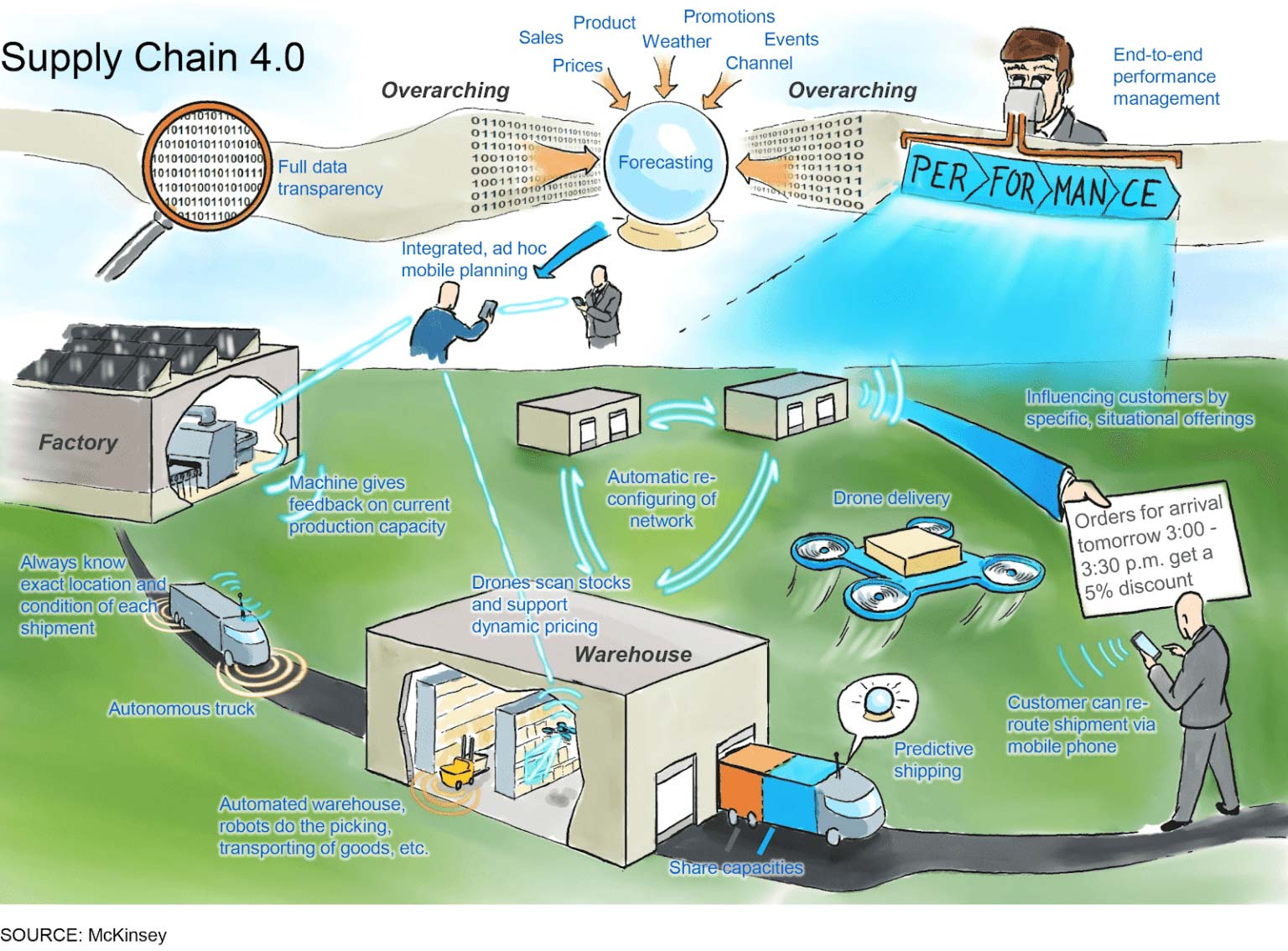
Safe & Efficient Warehousing
Warehousing operations like picking and packing orders will be extremely precise and lightning fast, not to mention much safer, thanks to augmented reality (AR).
AR headsets (think, Google Glass) could illuminate the most efficient route around a warehouse like a GPS right in front of your eyes, and clearly point to the exact items that you need to pick.
High-tech wearables are already incorporated into warehouse safety protocols to allow employees to signal for help and receive emergency assistance, and AR headsets with live-streaming capabilities would further improve the safety of employees while allowing employers to monitor and optimize productivity.
Reduced Transportation Cost and Duration
Long-distance trucking and last-mile delivery will become quicker and cheaper with the advent of autonomous trucks and drones.
Today, truck drivers are restricted to a limited amount of time on the road, rightly so to avoid tired driving, reduce accidents and mitigate dangerous driving. With the help of automated driving systems, it could help the trucker shortage and bring renewed interest to the profession, while allowing truck drivers to spend more time on the road.
Amazon Prime Air has shown that drones can deliver packages under 5 lbs in 30 minutes to select locations. Though not yet in operation, the drones will autonomously zoom through the skies to deliver the package to an outdoor delivery target. New transport concepts like drones or robots help companies improve that last-mile delivery for high-value packages.
Supply Chain-as-a-Service
There’s Print on Demand, and then there’s 3D Print on Demand.
By sharing design specs with a 3PL or fulfillment provider, retailers could repurpose their fulfillment centers as small-batch manufacturers that use 3D printers to create products in-house, thereby reducing shipping times for expedited orders.
This would allow 3PL and fulfillment providers to offer full-service supply chains to the growing number of online brands and ecommerce startups.
Advanced Inventory Control
Blockchain may sound a bit vague or abstract in the supply chain space, but essentially this can be used to scan QR codes and track the journey of an individual product (rather than groups of SKUs) throughout the supply chain. Once scanned, relevant product data is automatically synced for all business systems simultaneously.
Real-time data flowing between your systems allows for precise inventory forecasting and restocking capabilities. More in-depth tracking of your inventory also helps utilize the ‘shared economy’ where Uber and local delivery providers can seamlessly deliver products on your behalf.
This advanced form of collaboration also allows companies to easily detect fraudulent products, locate lost or stolen goods, and identify sources of product damage at each step of the supply chain.
Scale Instantly
Platforms like Shopify and Amazon have allowed ecommerce merchants to access a wide-range of capabilities that they otherwise would have to invest in and build themselves. In terms of supply chain, by linking via API to a large number of carriers and providing customers with negotiated rates, smart fulfillment companies like ShipHero allow their customers to directly compare their options and select the best shipping method.
Supply chain today is nearly unrecognizable to the paper-based and manual processes of the past. With exponential growth, the supply chain of the future will be far more integrated and efficient to what we have today. Startups like ShipHero are beating traditional carriers by leveraging tomorrow’s technology for today’s business needs.
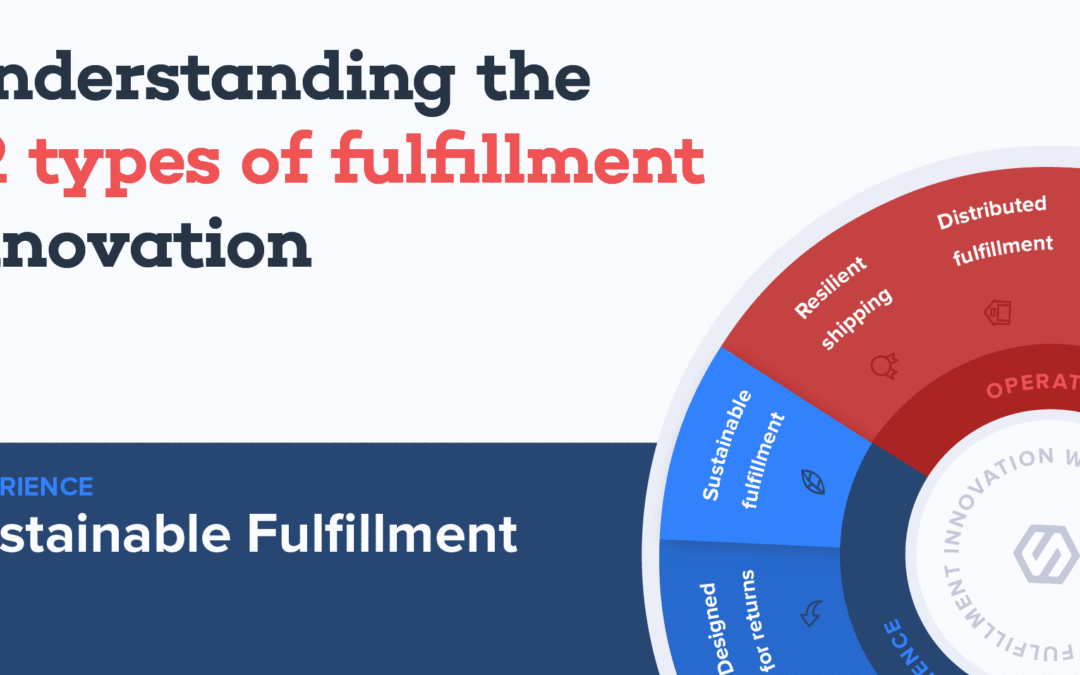
Mar 12, 2021 | Blog, The Fulfillment Innovation Wheel
ShipHero recently launched The Fulfillment Innovation Wheel to help 3PLs understand what capabilities and service offerings they need to implement in order to be successful and to help online retailers and brands choose which 3PL is right for them by allowing them to ‘check the boxes’.
The Fulfillment Innovation Wheel listed a set of twelve (12) capabilities that fulfillment providers and logistics companies should implement to continually delight their customers and push themselves towards greater success and innovation.
The twelve capabilities are:
- 2-Day Delivery
- Same Day Shipping
- At the Box Personalization
- Designed for Returns
- Sustainable Fulfillment
- Resilient Shipping
- Distributed Fulfillment
- Data Now
- Automation
- Scale Up and Out
- Integration Stack
- Professional Services
In this article, we will be diving into Capability #5: Sustainable fulfillment.
And be sure to stay tuned for future articles as we deep-dive into each capability.
Capability #5: Sustainable Fulfillment
Cut down your company’s waste, improve your brand image. Sounds like a win-win, doesn’t it? That’s the power of Sustainable Fulfillment — eCommerce order fulfillment that minimizes the environmental impacts of your supply chain.
eCommerce waste is a much more serious problem than you think. In 2018, the EPA estimated that packaging accounts for about 30% of all household waste. Moreover, with packaging made from plastics, only 9% of all plastics has ever been recycled, with the rest ending up in our oceans, forests, and landfills.
Beyond the harm to the environment, inconsiderate packaging hurts your brand reputation as well. Think back to opening a large box to find a much smaller product inside, or individually-wrapped parts, and thinking “what a waste!”.
Poor packaging leads to brands being labeled as inconsiderate or wasteful, and in a world where GenZ-types and Greta Thunberg’s run wild, your company should avoid this image at all costs.
So, how can your company achieve Sustainable Fulfillment? The answer lies in using proper packaging, planning intelligent shipping, and bringing awareness to your customer base.
How to Create Sustainable Fulfillment
If you fulfill orders in-house, you can reference the list below to achieve Sustainable Fulfilment. If you use a 3PL or third-party fulfillment provider, be sure that they have taken the necessary steps to create Sustainable Fulfillment for your business.
Sustainable eCommerce Packaging
Right-size packaging and eco-friendly packaging for your products is a necessary step towards Sustainable Fulfillment. More and more eCommerce businesses are using on-demand packaging for their products, and eliminating over-boxing by shipping the product in its original carton.
Right-size packaging means avoiding product packaging that is exorbitantly larger than the product itself, or eliminating excess materials or fillers.
Eco-friendly packaging means using recycled or renewable materials that are biodegradable or easily disposed of.
Your company may use large packaging with fillers to avoid damaging the product, but with breakthroughs in reusable and recyclable eCommerce packaging, you can avoid the damage while offering a great unboxing experience.
Companies like NoIssue exist to create sustainable, customized packaging.
Intelligent Order Fulfillment & Routing
Carbon emissions from transportation are another major source of waste in your supply chain. Last mile delivery and air freight make up a majority of carbon emissions in logistics, so transportation optimization and intelligent inventory management are significant ways of reducing your carbon footprint.
Transportation Optimization starts at the distribution center. By using Warehouse or Order Management Software (WMS/OMS) to route your orders correctly, your company can identify the most viable distribution center to ship orders in terms of delivery speed and cost. Additionally, last-mile delivery routes should be calculated to reduce mileage and ensure the most energy-efficient routes are selected.
Intelligent Inventory Management means that your inventory is placed in the warehouse closest to your customers, also known as distributed fulfillment, to reduce shipping distance and costs. Also, using WMS/OMS to ensure that orders are picked, packed and loaded correctly helps to reduce returns, reroutes and expedited shipping.
Our clients have used the above two strategies to lower the carbon footprint of our clients fulfillment while still guaranteeing affordable two-day shipping, powered by ShipHero SaaS Warehouse Management Software.
Our clients use our proprietary inventory forecasting capability to intelligently distribute their inventory across our nationwide network of warehouses. From there, we help them prioritize ground-shipping and avoid wasteful air-freight and expedited shipping. Not to mention, our clients use our SaaS WMS to accurately pick, pick and ship orders all from their tablet or mobile device.
Spread Awareness
Once your business has adopted Sustainable Fulfillment, the final step is to educate your customers! If you use recyclable materials, let your customers know so they can ensure responsible disposal and feel part of the solution. By getting customers on board with your eco-friendly efforts, you can have a much wider positive impact on the environment as a business.
You should advertise the steps you’ve taken towards Sustainable Fulfillment, and consider using packaging inserts in your orders that explain why your business took these steps and what customers can do to help. Adding this packaging insert has little to no added disruption to your fulfillment process, and it is a phenomenal way to reduce waste and improve your brand.
Our customers love that ShipHero allows them to completely customize their boxing experience, including packaging, inserts, and materials. If your 3PL or fulfillment provider doesn’t offer this, then maybe it’s time for a switch. ShipHero has $5 billion in orders shipped to date, and we attribute this success on the Fulfillment Innovation Wheel to Capability #5: Sustainable Fulfillment.
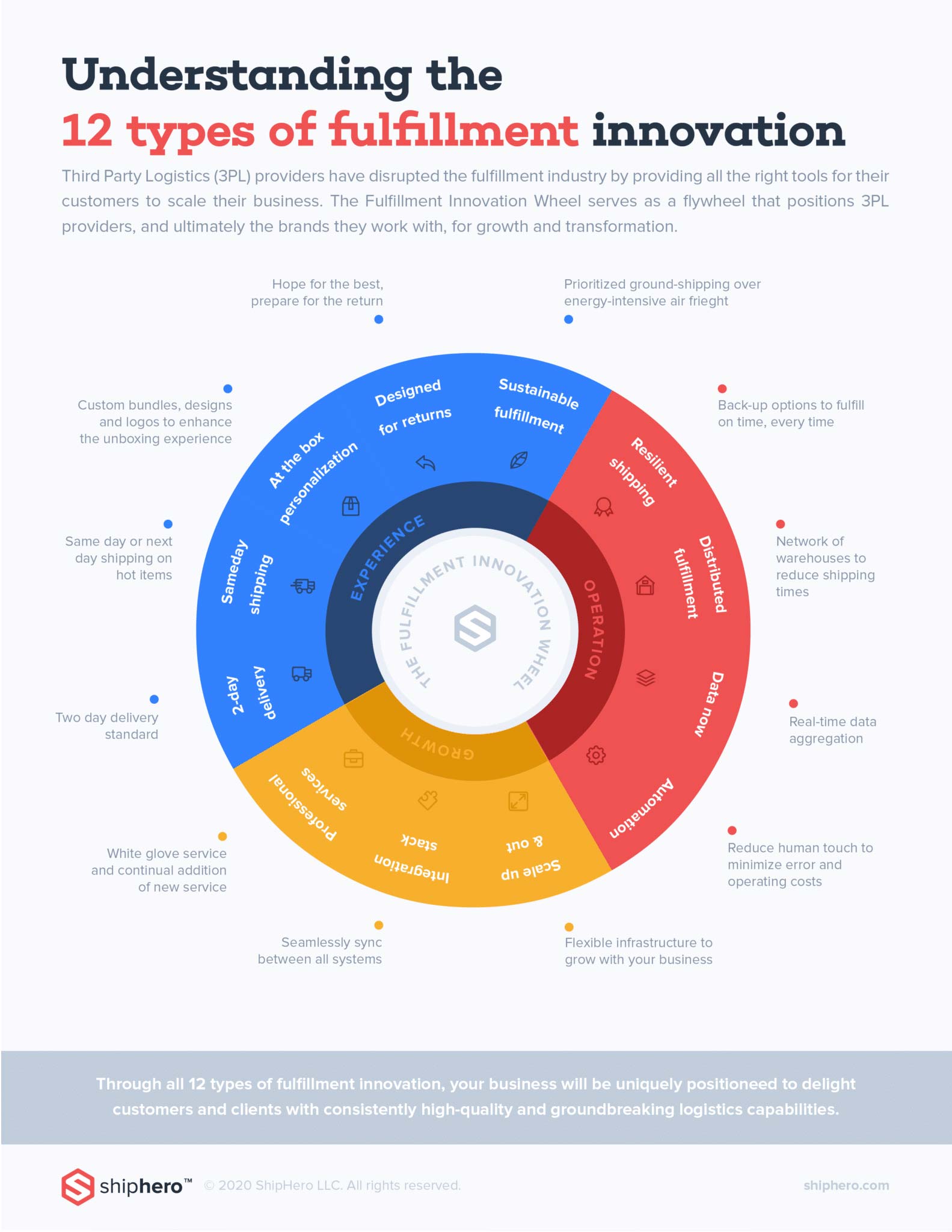
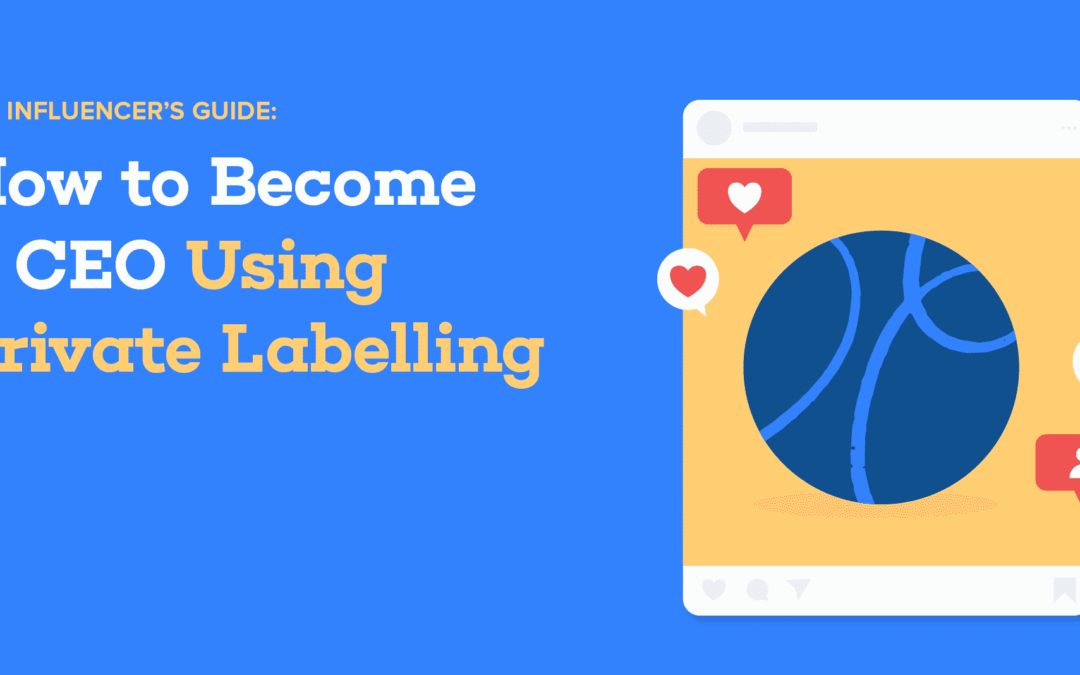
Mar 10, 2021 | Blog
Do you want to monetize your brand? Do you want to engage your audience through real, non-digital means? Are you ready to become the InfluentrepreneurTM (Influencer + Entrepreneur) you were always meant to be?
Today, more and more influencers use private labelling – selling pre-made products under your own branding – to earn revenue and provide followers with a high-quality product that they can trust, because it’s yours!
As an influencer, you already have an online audience. And if you currently promote products on your page, then you also have a solid base of people who rely on your product recommendations. With this, becoming a CEO is as easy as:
- Pick a good product
- Apply your logo and brand
- Choose a shipping provider
- Sell your products online
There are many success stories from influencers turned CEOs, like our adorable canine friend Humphrey and his owner’s brand, Spotted by Humphrey. And companies like inKLOUT exist to help influencers design and market their own products.
But if you’re among the brave souls that want to tackle this journey yourself, this how-to guide will break down each of the three steps (especially the complicated logistics-side of things) to get you on your way to becoming CEO of your own e-commerce brand.
4 Steps to Become an Influencer + Entrepreneur
The private labelling business is very straightforward. You pick a product from a manufacturer, you brand the product, you sell the product, and you get the product to the customer’s doorstep.
You may have heard the term Dropshipping before, but this simply means that the manufacturer handles the final step for you and ships the product to your customers. We’ll get into this later on in Step 3…
So let’s get into the four steps to start your very own e-commerce private label business.
Step 1: Pick a Good Product
The most important thing to do when starting a private label business is to ask yourself the important questions, like:
- Why do people follow you?
- What is your passion or niche?
- What are your peers selling?
Answers to these questions will help you pick a product that is relevant to your personal image and content.
The search begins. Depending on your theme or category, whether it’s fashion, beauty, wellness, etc., you want to search for trending products in your personal domain, or products that you personally use and believe in.
Avoid over-saturated items. You want to stay ahead of trends, not lag behind them. Whatever product you choose, make sure that there isn’t too much competition. Typically, products that have a smaller amount of reviews (<1,000) on Amazon or on the private label manufacturer website are good candidates, as long as they are high quality.
Pick Your Manufacturer. Search on sites like Thomasnet, Alibaba, AliExpress or Google. Simply type “*your product* private label” and see the list of results. Be sure to ask about cost of goods, shipping cost, and turnaround time for any order.
Here is a list of Private Label manufacturers based on category. And as mentioned earlier, companies like inKLOUT can help you design or select a product for your brand.
Note: Most manufacturers do only use cashier’s check or a money wire for payment.
Step 2: Apply Your Logo and Brand
Your company now needs a name, a logo, a product label, and a slogan. This is your opportunity to tell your story, so have some fun with it.
Company Name
It’s important to select a name that resonates with your brand and with your audience. It’s equally important to make sure the name you choose isn’t already taken, because you will want to be able to trademark your name for a site domain and social media.
Shopify has a Business Name Generator that you can use to search for and create your perfect business name.
Company Logo
When you think of logos, what comes to mind? The Nike Swoosh? The McDonald’s Golden Arches? Right from the start, these companies knew that a thoughtful logo has a huge impact on your audience.
If you already have a great idea for your logo, sketch it out! Then, if you aren’t already a master at Photoshop, consider using a Graphic Designer to create a digital copy of your logo. We also recommend using a professional because you will need multiple image sizes for product labels, social media, website, and more.
Graphic Designers can also help you brainstorm ideas for a logo if you don’t already have one. Sites like 99designs, Fiverr, and Upwork have loads of freelance Graphic Designers that can help you create your logo.
Product Label
Typically, the private labelling manufacturer creates the product label for you, once they have your company logo and name. Given the manufacturer, you can customize the labelling as much or as little as you’d like, so be sure to ask about the manufacturer’s capabilities during your search.
Company Slogan
“Just Do It.”– Nike
“I’m Lovin’ It.” — McDonald’s
“We Throw in Extra Parts to Mess With You” — Ikea (not really)
Your slogan is your one sentence summary of your company and your brand. It should be something to grab your audience’s attention and showcase your company.
Step 3: Choose a Shipping Provider
In the most simple terms, you have three options when it comes to shipping.
In-House
The manufacturer sends you the product directly, and you store it in your home … or a warehouse, storage locker or shed. From there, you pack the product in a box/package and use USPS, FedEx or another delivery service to send it to the customer. This is called in-house fulfillment, because you do it entirely by yourself, most likely in your house.
This is the cheapest option, with just an upfront investment for a $200 label printer, but also the most time-consuming and the most difficult to guarantee quality service. Not to mention, you are responsible for handling product returns.
Keep in mind you are competing with brands that offer 2-day shipping and free returns. And when you start to sell a lot of products, you may find it hard to grow your business while spending all your time putting your products in boxes and taking trips to the post office.
Outsource
A company will store the product in their large network of warehouses and will ship the products on your behalf. For a set per-item fee, an eCommerce fulfillment company like ShipHero can help you deliver within two days, help you handle returns, and help you manage inventory.
Fulfillment-by-Amazon (FBA) is a popular example of outsourced fulfillment because you send your product to their warehouse, and for a per-item fee, Amazon will deliver your products.
Dropshipping
The factory/wholesaler will also pack and ship it directly to your customer, bypassing you entirely. This allows business owners to take a hands-off approach to the operation of their business, and customer satisfaction lies entirely in the hands of the manufacturer.
As a cheap and convenient option, dropshipping also results in lower profit margins, longer shipping times, and less control over your business. But CEOs that want to have a more hands-off approach will choose dropshipping for the minimum involvement required.
Step 4: Sell Your Product Online
With a fully-branded product and a shipping method in place, all that’s left to do is sell.
Whether you want to spread your products to everyone or keep it exclusive is up to you and your brand. You can sign up for Instagram Shopping to post a New Catalog of your products, or you can connect to your website. Instagram allows integrations with Shopify, BigCommerce, Magento and WooCommerce.
Besides your social media channels, you can sell on platforms like Shopify and Amazon to reach a large audience, but Shopify lets you design your own website and gives you more control to build your brand.
There you have it!
The four steps to becoming brand owner and CEO of your very own eCommerce private label company. ShipHero created this influencer how-to guide to help you on your entrepreneurial journey, because ShipHero’s mission is to help businesses deliver their eCommerce.
We’ve shipped over $5 billion orders to date. Each day, more and more businesses are signing up with ShipHero to receive 2-day shipping, return handling and the eco-friendly shipping option with priority ground shipping.






